Franchise businesses in the US are evolving from fast casual dining to ghost kitchens. Discover how entrepreneurs and investors can tap into financing options, growth opportunities, and the future of food franchises in America’s market.
Franchise businesses in the US are evolving from fast casual dining to ghost kitchens. Discover how entrepreneurs and investors can tap into financing options, growth opportunities, and the future of food franchises in America’s market.
Image courtesy of CurvesInformation
A franchise is a business model where a company (the franchisor) allows an individual or group (the franchisee) to operate a business using its established brand, systems, and support in exchange for fees or royalties. It’s a popular way to expand a business without the franchisor having to directly manage every new location.
Here are the key points:
· Franchisor – Owns the brand, trademarks, and business system (e.g., McDonald’s, 7-Eleven).
· Franchisee – Buys the right to operate under the franchisor’s brand and system.
· Franchise Agreement – A legal contract outlining rights, obligations, fees, territory, and duration (usually 5–20 years).
Typical Franchise Costs: Initial Franchise Fee – Paid upfront to use the brand. Royalty Fees – Ongoing payments (usually 4–10% of revenue). Marketing/Advertising Fees – Contributed to national or regional brand campaigns. Total Investment – Covers equipment, real estate, staff, training, and startup costs.
Advantages of Franchising: Proven business model (less risk than starting from scratch). Brand recognition. Training and operational support. Marketing and advertising provided by franchisor. Easier access to financing (banks trust franchises more).
Disadvantages of Franchising: High startup costs and ongoing royalties. Limited control (must follow franchisor’s system and rules). Dependent on franchisor’s reputation—if the brand suffers, so does the franchisee. Contract restrictions (territory, resale, renewal terms).
Types of Franchises: Product Distribution Franchise – Franchisee sells franchisor’s products (e.g., Coca-Cola bottling). Business Format Franchise – Most common; franchisee uses the franchisor’s brand, operations, and support (e.g., KFC, Subway). Manufacturing Franchise – Franchisee manufactures products under franchisor’s brand (e.g., food/beverage bottling).
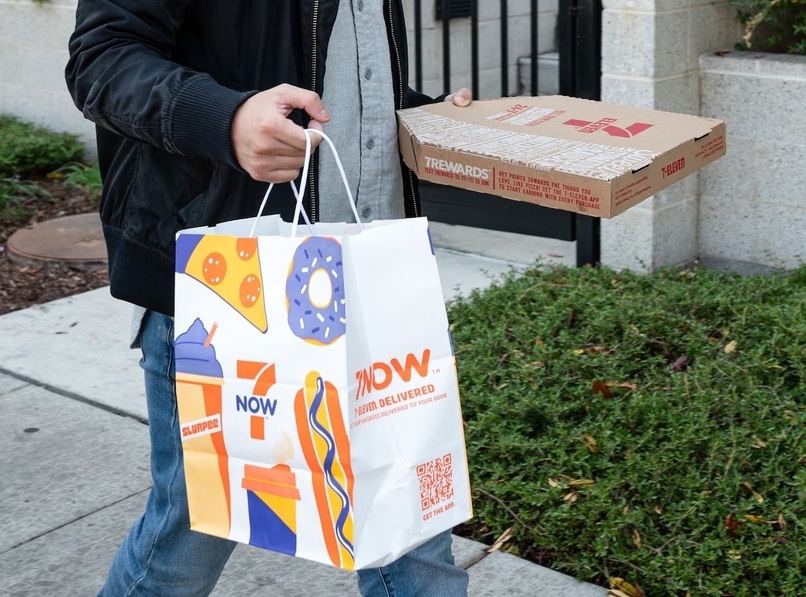
Big Franchises
· McDonald’s (fast food)
· 7-Eleven (convenience stores)
· Marriott (hotels)
· Anytime Fitness (gyms)
· The UPS Store (services)
Franchising is especially strong in the USA, but it’s also expanding rapidly in Asia, Europe, and the Middle East, with food & beverage, retail, education, and health/fitness being popular sectors.
Franchising has long been one of the most powerful business models in the United States, giving entrepreneurs an accessible path to ownership while allowing established brands to expand rapidly. Today, the U.S. is not only the birthplace of global giants like McDonald’s, Subway, and Starbucks but also a hub of innovation where new franchise concepts emerge and scale quickly.
A type of restaurant that sits between fast food and full-service dining. Customers order at a counter, but the food quality, freshness, and atmosphere are higher than typical fast food.
Examples: Chipotle, Panera Bread, Shake Shack. Fresh ingredients, often customizable menus. Trendy interior design, comfortable seating. Faster service than sit-down restaurants. Slightly higher price point than fast food.
Fast casual franchises grew rapidly in the 2000s and 2010s because they appeal to health-conscious, convenience-seeking consumers.
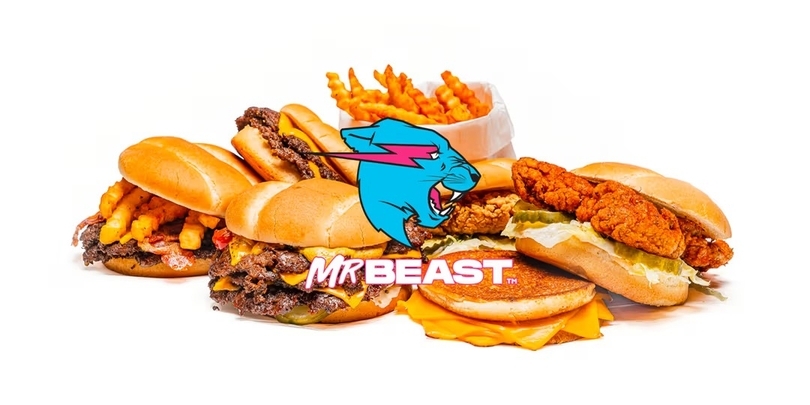
A professional food preparation and cooking facility set up to prepare meals only for delivery or pickup. No dine-in area.
Examples: MrBeast Burger (launched only through delivery apps), Reef Kitchens, CloudKitchens (started by ex-Uber CEO Travis Kalanick). Operates from shared or hidden kitchen spaces. Relies heavily on food delivery platforms like Uber Eats, DoorDash, and Grubhub. Lower overhead costs (no prime retail location, less staff). Allows one kitchen to run multiple “virtual brands.”
Ghost kitchens exploded after COVID-19, when delivery demand surged and restaurants needed new ways to serve customers.
Many traditional franchises (like Wendy’s, Chick-fil-A, Pizza Hut) are experimenting with ghost kitchens to expand in dense urban areas with lower cost. Fast casual still dominates consumer demand for healthier, fresher quick meals. Ghost kitchens are seen as the future growth engine for franchises because they: Lower entry costs for franchisees. Expand reach into delivery-driven markets. Allow fast testing of new food concepts.
Fast casual = the past 20 years of food franchise growth.
Ghost kitchens = the next 20 years of franchise disruption.
A hybrid between fast food and casual dining—better quality food, fresher ingredients, but still quick service. Examples: Chipotle, Cava, Shake Shack, Sweetgreen. Consumers want healthier, customizable meals. Millennials and Gen Z prefer “experience + quality” over cheap fast food. Higher average spend than QSR (Quick Service Restaurants). Franchise Trend: Many traditional fast-food brands are upgrading menus or redesigning stores to look more like fast casual concepts.
Technology-Driven Franchises
Digital Ordering & Delivery: Online apps, third-party platforms (DoorDash, Uber Eats) are now essential. Self-Service & AI: Kiosks, automated kitchens, and AI-driven drive-thrus are cutting labor costs. Loyalty Apps: Starbucks, McDonald’s, and Chick-fil-A show how loyalty programs drive repeat visits. Franchise Trend: Brands that invest in tech see faster franchise growth because investors know tech = efficiency.
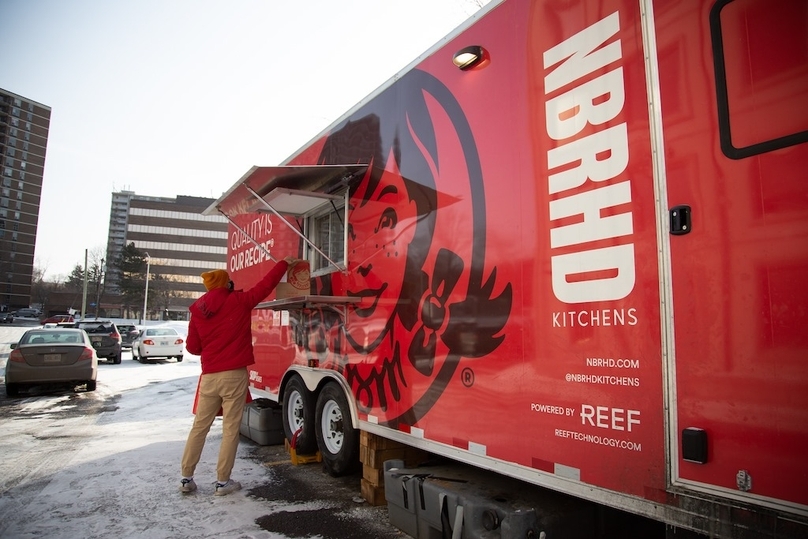
Ghost Kitchens & Virtual Brands
Ghost Kitchens: Delivery-only kitchens with no dining space. Virtual Brands: Online-only restaurant brands that share kitchens with existing restaurants. Lower startup costs (no expensive storefront). Allows franchisees to run multiple concepts from one kitchen. Perfect for testing new markets before opening physical stores. Examples: MrBeast Burger, WowBao, Kitchen United. Franchise Trend: Big chains are experimenting—e.g., Wendy’s opened hundreds of delivery-only units.
Health & Sustainability Focus
Consumer Demand: Organic, plant-based, and sustainable food choices are no longer niche—they’re mainstream. Franchise Examples: Saladworks (fresh bowls and salads). Veggie Grill (plant-based fast casual). Sweetgreen (sustainable sourcing, healthy meals). Future Outlook: Expect more franchises to adopt eco-friendly packaging, carbon-neutral operations, and plant-based menus.
Smaller Footprints & Flexible Formats
Trend: Instead of huge dine-in restaurants, many franchises are shifting to: Smaller drive-thru only stores. Pickup windows. In-mall kiosks. Food trucks and pop-ups. Reduces overhead and adapts to delivery-first culture. Franchise Example: Taco Bell “Go Mobile” concept with dual drive-thrus focused on app orders.
Global Expansion & Cross-Cultural Concepts
Trend: U.S. franchises are expanding aggressively into Asia, the Middle East, and Latin America. Example: Jollibee (Philippines) competing globally with McDonald’s and KFC. Fusion Concepts: Franchises are experimenting with cultural mash-ups (Korean BBQ tacos, Mediterranean bowls, etc.).
Investment Outlook
Fast Casual: Higher growth rates and customer loyalty → strong investment potential.
Ghost Kitchens: Lower risk, smaller capital needed → attractive for new franchisees.
Hybrid Models: The future may blend both—physical stores for branding + ghost kitchens for delivery reach.
Fast casual is becoming the new “mainstream” fast food. Ghost kitchens lower entry barriers for franchisees and fuel rapid expansion. Tech and delivery are now central to food franchising success. Health, sustainability, and smaller formats are shaping consumer expectations. The franchises that survive and thrive will be those that adapt quickly to digital-first, health-conscious, and flexible dining trends.
Unlike independent businesses, which require owners to build everything from scratch, a franchise offers the advantage of proven systems, brand recognition, and established customer trust. Franchisees benefit from training, marketing support, and supply chain access, reducing many of the risks that come with starting a business. Independent operators, however, enjoy more freedom in decision-making but often face higher risks and slower brand growth.
Ownership & Branding
Franchise: You own the business but operate under the franchisor’s brand, logo, and system. Example: Opening a McDonald’s or Subway means you can’t change the name, menu, or branding.
Independent Business: You create your own brand, logo, and concept. Example: Starting your own burger restaurant with a unique menu and name.
Startup Costs
Franchise: Typically higher upfront—franchise fee, royalties, mandatory equipment, and setup standards. Example: A McDonald’s franchise may cost $1M–$2M+.
Independent Business: Costs vary depending on your decisions—you can start lean or go big. You avoid franchise fees, but you also lose bulk purchasing power franchisors offer.
Business Model
Franchise: Proven system with operational manuals, training, supply chain, and marketing already set up. Lower risk because the model is tested.
Independent Business: You design your own system—menu, suppliers, pricing, marketing, etc. Higher risk because the model is unproven.
Control & Flexibility
Franchise: Limited freedom—you must follow franchisor’s rules on branding, menu, store layout, pricing, etc. Innovation is harder; you can’t just add a new product without approval.
Independent Business: Full control—change menu, pricing, suppliers, or branding anytime. More room for creativity and adapting to local market trends.
Support & Training
Franchise: Training, marketing, and operational support provided. National advertising campaigns benefit all franchisees.
Independent Business: No outside support—you’re responsible for staff training, advertising, and learning through trial & error.
Risk & Success Rate
Franchise: Success rate is higher; franchisees benefit from brand recognition and proven systems. Failure rate is typically lower compared to independents.
Independent Business: Higher failure rate in the first 5 years (often 50–60%). Success depends entirely on owner’s skills, market fit, and execution.
Profitability
Franchise: Revenue potential is strong due to brand power, but profits are reduced by royalty and advertising fees (usually 4–10% of sales).
Independent Business: You keep 100% of profits, but revenue may be slower to grow because of lack of brand recognition.
Choose a franchise if you want a safer path, proven systems, and are okay following rules. Choose an independent business if you value freedom, creativity, and full profit potential—but can accept higher risk.
The United States remains the largest franchise market in the world, with over 800,000 franchise establishments contributing more than $825 billion annually to the economy. Other strong markets include China, Canada, India, and Southeast Asia, where U.S. brands expand aggressively. Within the U.S., franchising is expanding across industries ranging from food and retail to fitness, education, and healthcare.
Worldwide, franchising shows remarkable growth—but the biggest and most established markets stand out: United States: With over 806,000 franchise units in 2023, it remains the largest global franchise market. Canada: Contributes an additional ~65,000 units within North America. Europe: Boasts over 180,000 franchise outlets across countries like the UK, France, and Germany (which together make up ~53% of European franchise units). Asia-Pacific: The fastest-growing region—more than 300,000 total franchise units with over 17,000 new outlets added in 2023. Key players include India (48,000 units), China, Japan, and South Korea. Middle East & Africa: Comprising ~29,000 franchise outlets in 2023, with rapid expansion in the UAE, Saudi Arabia, and South Africa.
Fast-Growing Franchise Brands in the U.S.
Recent years have seen rapid growth in franchises that balance convenience, affordability, and innovation. Top fast-growing brands include: Crumbl Cookies – disrupting the dessert space with a rotating menu and viral social media strategy. Tropical Smoothie Café – tapping into health-conscious dining trends. Orangetheory Fitness – blending technology and community-driven fitness experiences. Jersey Mike’s Subs – competing with established sandwich chains through a focus on freshness and customer service. Anytime Fitness – expanding worldwide with flexible, 24-hour access models. These brands reflect shifting consumer demands, from indulgent treats to healthier lifestyles and convenience-first experiences.
Top Fast-Growing Franchise Brands in the U.S.
Here are some of the fastest-growing or strategically expanding franchise brands in the U.S., drawn from recent sources:
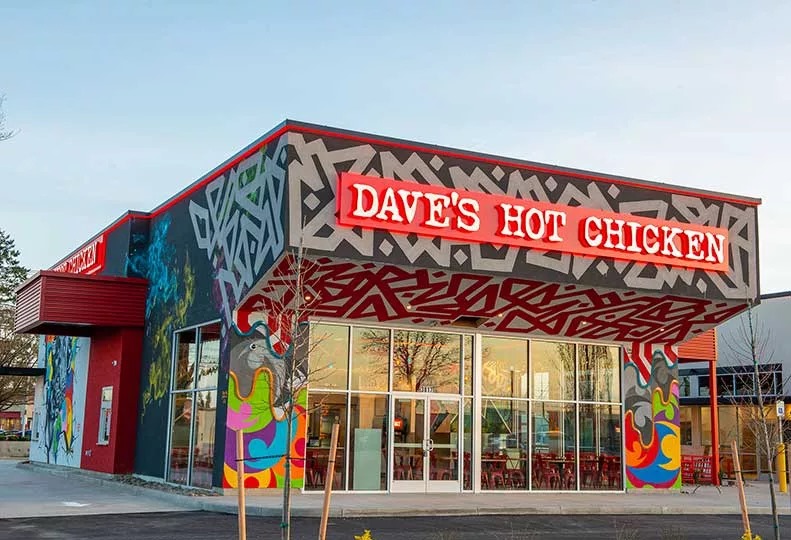
Dave’s Hot Chicken – viral hot-chicken concept, rapidly expanding. Exploded from a $900 startup in 2017 to over 315 locations across the U.S., Canada, and beyond. Acquired by Roark Capital, growth continues under its original leadership.
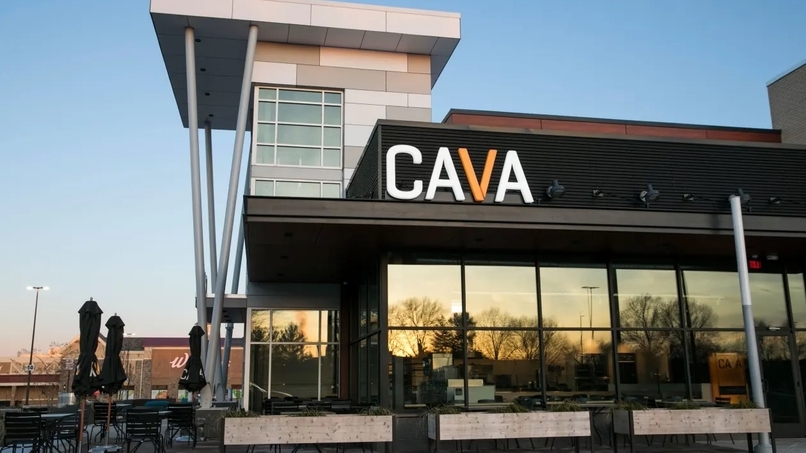
Cava (“Mediterranean Chipotle”) – Mediterranean QSR with aggressive growth plans and ~$1B revenue. Opened 62–66 new U.S. locations in 2025, with 367 total. Generated $954 million in 2024 revenue (up 35%) and targets 1,000 locations by 2032.
Qdoba – Mexican fast-casual ramping up with incentives and non-traditional locations. Planning over 500 new locations by 2033 (total pipeline now 1,500). Offers $100,000 incentives to new franchisees, aiming for ~100 new openings per year and exploring non-traditional spaces like airports and campuses.
Whataburger – building out of regional roots into national presence. Now expanding beyond Texas—planning another 80 locations in Georgia and Alabama over the next five years. Its COO appointment reflects a push for national growth.
Raising Cane’s – high single-year growth (~20% in 2024). Opened 118 new restaurants in 2024, reaching over 850 locations—about 20% growth in just one year.
Tropical Smoothie Café – strong new deal activity and unit growth. Celebrated its 1,500th location in 2024; signed 247 new franchise deals and plans 700 more.
Entrepreneur’s 2025 Franchise 500 Rankings:
· Taco Bell – #1 (6,418 U.S. franchises)
· Jersey Mike’s Subs – #2 (2,823 U.S. units)
· Dunkin’ Donuts – #3 (9,548 U.S. units)
· Popeyes – #4 (3,087 U.S. units)
· Ace Hardware, UPS Store, Culver’s, Wendy’s, Hampton by Hilton, Kumon fill out the top 10.
Rapid Growth Highlights (by Percent Increase):
· Jersey Mike’s Subs: Nearly +47% growth over 3 years; consistently among fastest-growing sandwich chains. Jersey Mike’s Subs – solid, consistent expansion among top ranked franchises.
· Popeyes: +21% unit growth over 3 years – either fastest-growing or largest in unit counts.
· Stratus Building Solutions (cleaning services): +73% growth over 3 years with over 4,000 units.
Financing a Franchise Business
One of the biggest hurdles for first-time investors is financing. Fortunately, several options exist:
· Small Business Administration (SBA) loans tailored for franchisees.
· Franchisor financing programs, where brands assist with upfront costs.
· Traditional bank loans for those with strong credit.
· Alternative lenders or crowdfunding for innovative financing solutions.
Choosing the right financing option depends on investment size, personal credit history, and the specific franchise model.
Franchisor Financing Programs: Many franchisors offer in-house financing or partnerships with lenders. Can cover franchise fees, equipment, or startup costs. Easier approval, franchisor knows their own model’s risks. Limited flexibility—may not cover working capital or real estate. Example: Subway and 7-Eleven offer partial financing for qualified candidates.
Bank Loans (Traditional Financing): Term Loans: Lump sum for startup, repaid in installments with interest. Revolving credit to manage working capital. Best for borrowers with strong credit and collateral. Competitive interest rates. Long approval process, high documentation requirements.
SBA Loans (U.S. – Small Business Administration): A top choice for first-time investors. SBA 7(a) Loan Program: Covers working capital, equipment, and even real estate. SBA CDC/504 Loan Program: Ideal for purchasing property or large equipment. Lower down payments, longer repayment terms. Strict eligibility, paperwork-heavy. Many franchises are SBA-approved, which makes approval easier.
Alternative Lenders & Online Financing: Fintech lenders, peer-to-peer lending, or merchant cash advances. Faster approval than banks. Quick access to cash. Higher interest rates and shorter repayment terms.
Home Equity Loans / HELOC: Borrow against the equity in your home. Lower interest than personal loans. Risky—if the franchise fails, your home is on the line.
Retirement Funds (ROBS – Rollover for Business Startups): Allows you to use 401(k) or IRA funds to finance a franchise without penalties. Done through a legal structure (ROBS provider helps set it up). No debt or interest. High personal risk (retirement savings tied to business).
Friends, Family & Angel Investors: Personal network funding or outside investors. Flexible terms, fewer requirements. Strained relationships if the business struggles.
Partnerships or Co-Ownership: Teaming up with other investors to share capital and risk. Common in multi-unit franchises. Must carefully define roles and profit-sharing in contracts.
Typical Franchise Financing Breakdown. For a mid-range franchise (~$250K investment): Franchisee’s own funds (20–30%) – down payment required. Bank/SBA loan (50–60%) – main capital source. Franchisor financing (10–20%) – often for equipment/fees.
Key Tips for First-Time Investors
1. Know the Total Cost: Beyond franchise fees, factor in equipment, real estate, marketing, and 3–6 months of working capital.
2. Check the FDD (Franchise Disclosure Document): Lists average costs, revenues, and financing options.
3. Improve Credit Score: Better credit = better loan terms.
4. Compare Multiple Lenders: Don’t just rely on franchisor’s partner banks.
5. Have Skin in the Game: Most lenders require 20–30% of startup costs from your own funds.
Safer, structured option = SBA loan or franchisor financing.
Faster, riskier option = online lenders or retirement rollover.
Most first-time franchisees use a mix: their own savings + SBA loan + franchisor support.
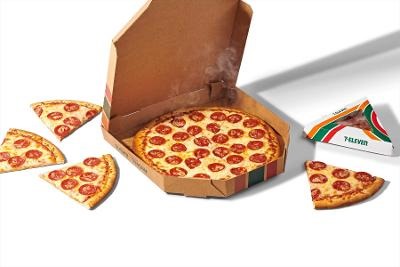
The Future of Food Franchises
Food remains the largest segment in franchising, but the industry is evolving. Fast casual restaurants—such as Chipotle and Panera Bread—have become the sweet spot between fast food and full-service dining. Customers want speed, quality, and healthier options, and franchises are meeting those needs.
Beyond brick-and-mortar, the rise of ghost kitchens is reshaping the industry. These delivery-only kitchens allow brands to reach more customers without the high costs of traditional storefronts. Franchises adopting ghost kitchen models can scale more efficiently while aligning with the growing demand for online ordering and third-party delivery platforms.
Tips for Entrepreneurs Entering U.S. Franchising
For aspiring franchisees, success depends on preparation and due diligence:
1. Research thoroughly – Compare franchise disclosure documents (FDD) and evaluate long-term profitability.
2. Match values with brand – Choose a franchise that aligns with your personal interests and financial goals.
3. Understand total costs – Beyond franchise fees, consider royalties, marketing contributions, and operational expenses.
4. Seek expert advice – Consult franchise attorneys or financial advisors to review contracts and financing structures.
5. Start with a strong support system – Franchises that offer training and robust operational support increase the chances of success.
Tips for Entrepreneurs & Investors: Buying a U.S. Franchise
Do Your Homework First. Understand the Franchise Industry: The U.S. has 800,000+ franchise establishments across food, retail, fitness, education, services, etc. Check Market Demand: Is the brand strong in your target location? A successful brand in California may not work the same in Ohio. Study the Competition: Who are the established players locally? Is the market oversaturated?
Evaluate the Franchise Brand. Franchise Disclosure Document (FDD): U.S. law requires franchisors to provide this. It includes costs, financial performance, litigation history, and obligations. Franchisee Satisfaction: Talk to current and former franchisees—ask about profitability, support, and challenges. Track Record: Look for franchises with consistent growth and proven systems.
Know the True Costs. Initial Franchise Fee: Ranges from $10,000 to $1M+, depending on the brand. Total Investment: Includes build-out, equipment, staffing, marketing, and 3–6 months of operating capital. Ongoing Fees: Royalty (4–10% of revenue) + Marketing contributions (2–5%). Hidden Costs: Renovations, technology fees, and mandatory supplier costs.
Secure the Right Financing. SBA Loans (7a & 504): The #1 option for first-time U.S. franchisees. Many franchisors are SBA-approved. Franchisor Financing: Some brands (like 7-Eleven) offer in-house or partnered lender programs. Personal Funds: Most lenders want you to contribute 20–30% of startup costs.
Choose the Right Location & Territory. Exclusive Territory: Many franchises give you rights to a defined area. Location Strategy: High foot traffic vs. delivery-first (ghost kitchens, kiosks, mobile formats). Trends: Drive-thru only, suburban expansion, and non-traditional venues (airports, universities) are growing in the U.S.
Assess Your Lifestyle Fit. Some franchises are hands-on (restaurants, gyms) requiring daily involvement. Others are semi-absentee or manager-run (laundromats, car washes, storage, vending). Ask yourself: Do you want to run operations or invest passively?
Understand the Legal Side. Franchise Agreement: Binding for 5–20 years. Check renewal, termination, resale rights, and territory restrictions. Hire a Franchise Attorney: Critical for reviewing the FDD and contract. Franchises must follow U.S. Federal Trade Commission (FTC) franchise laws.
Look Beyond Food. Food dominates franchising, but service-based franchises (cleaning, health care, fitness, education, logistics) are growing fast in the U.S. with lower overhead and higher ROI. Examples: UPS Store, Kumon, Anytime Fitness, Stratus Building Solutions.
Focus on Training & Support. Strong franchisors offer initial training, ongoing operations support, marketing assistance, and technology platforms. Avoid franchisors that just sell rights without strong infrastructure.
Plan for Long-Term Growth. Single Unit vs. Multi-Unit: Many U.S. investors sign deals to open multiple locations for better ROI. Exit Strategy: Can you sell the franchise later? Some brands help with resale. Trends: Ghost kitchens, eco-friendly brands, and fast casual dining will dominate the next 5–10 years.
Quick Checklist Before Buying a U.S. Franchise
· Read the Franchise Disclosure Document (FDD) carefully.
· Talk to at least 5 existing franchisees.
· Hire a franchise attorney & accountant.
· Confirm financing options (SBA, franchisor, banks).
· Visit multiple franchise locations.
· Run financial projections (break-even, ROI).
· Assess your personal role (owner-operator vs. investor).
Franchising in the United States is entering a dynamic era where innovation meets tradition. From fast casual dining concepts that prioritize quality and speed to ghost kitchens redefining delivery models, opportunities for entrepreneurs continue to expand. With the right research, financing, and brand partnership, investors can tap into one of the most resilient and future-ready sectors of the American economy.